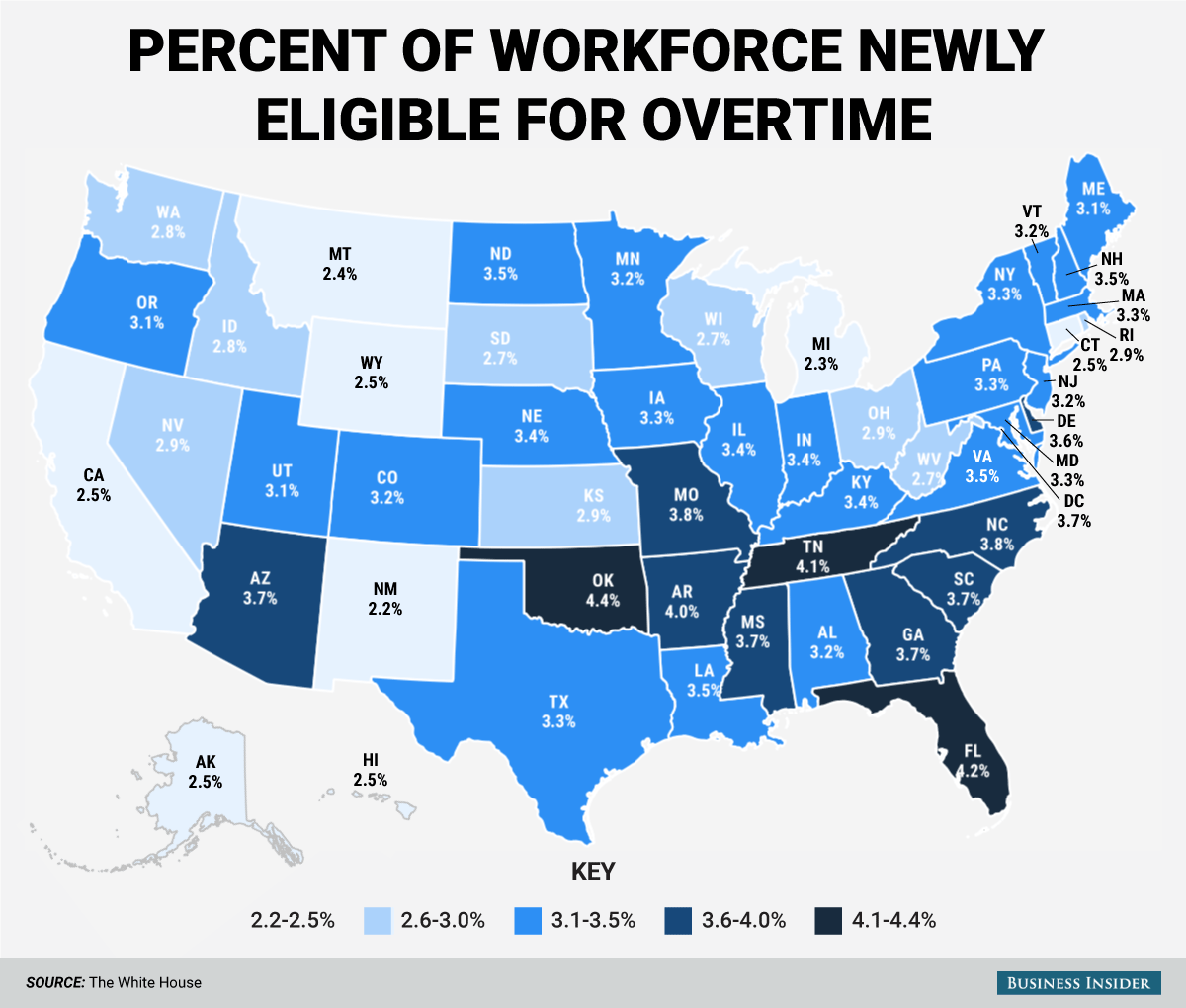
NEW OVERTIME RULES
DON’T PANIC – Employers Have Until December 1, 2016 to Figure This Out

On May 18, 2016, the Obama administration announced the publication of the Department of Labor’s final rules updating the federal overtime regulations. We knew these rules were coming. In 2014, President Obama signed a Presidential Memorandum directing the DOL to update these regulations and on July 6, 2015 the DOL published a Notice of Proposed Rulemaking. These final overtime rules differ a bit from what the DOL proposed in 2015. This article will bring you up to date and will suggest some strategies to comply with the new overtime rules.
Mandatory overtime for certain classes of employees is required by the federal Fair Labor Standards Act (the “FLSA”). The FLSA regulations establish two categories of employees: exempt and non-exempt. Exempt employees are exempt from the overtime requirements; non-exempt employees must be paid overtime for hours worked in excess of forty hours in any given week.
Many employers erroneously believe that if they pay an employee a salary, the employee is not eligible for overtime pay. This is and always has been WRONG. To be exempt from the overtime requirements, three tests must be met: (1) the employee must be paid a fixed salary, (2) the amount of the salary must exceed a certain amount, and (3) the employee’s actual job duties must primarily involve executive, administrative, professional, computer, or outside sales duties. All three tests must be met for the employee to be exempt. Even if an employee is paid a salary that exceeds the minimum amount (tests 1 and 2), if that employee’s actual job responsibilities do not fit within one of the job duties exemptions (test 3), then that employee is entitled to overtime pay for hours worked over forty hours in a work week.
The new overtime rules have changed test 2. The current rules set the minimum salary amount at $455 per week, or $23,660 per year. The new rules, which go into effect December 1, 2016, raise the minimum salary to $913 per week, or $47,476 per year.
The new overtime rules did not change the so-called “duties tests.” The DOL has published a number of “Fact Sheets” providing helpful information on the various duties tests (See Here). For example, to qualify for the administrative exemption, the employee must meet a 3-part test: (1) the employee must be compensated on a salary or fee basis at the new rate (effective 12/1/2016) of not less than $913 per week or $47,476 per year, (2) the employee’s primary duty must be the performance of office or non-manual work directly related to the management or general business operation of the employer or the employer’s customers; and (3) the employee’s primary duty includes the exercise of discretion and independent judgment with respect to matters of significance. It is this last one that trips up a lot of employers. DOL Fact Sheet #17C states: “The term ‘matters of significance’ refers to the level of importance or consequence of the work performed. An employee does not exercise discretion and independent judgment with respect to matters of significance merely because the employer will experience financial losses if the employee fails to perform the job properly.’
We recommend that employers take another look at all employees who are currently classified as exempt and review the duties tests for each exemption. If an employee does not meet the applicable duties test, then he or she is currently misclassified and should be re-classified as non-exempt. Assuming all of the currently exempt employees meet the applicable duties tests, the next step is to determine whether any of them do not receive a salary of at least $913 per week or $47,476 per year. Beginning as soon as possible, these employees falling under the minimum salary threshold should begin tracking their time, to determine whether or how often they exceed forty hours per week. Once the time data has been collected, the employer will need to decide whether it makes sense to raise the salaries of certain of those employees so that they will remain exempt starting December 1, 2016 or whether such employees will be re-classified as non-exempt as of December 1, 2016. If the employer decides to re-classify currently exempt employees as non-exempt beginning December 1, 2016, the employer needs to have a reliable method of tracking those employees’ hours to determine overtime compensation or to ensure that such employees do not work more than forty hours per week.
duties tests, the next step is to determine whether any of them do not receive a salary of at least $913 per week or $47,476 per year. Beginning as soon as possible, these employees falling under the minimum salary threshold should begin tracking their time, to determine whether or how often they exceed forty hours per week. Once the time data has been collected, the employer will need to decide whether it makes sense to raise the salaries of certain of those employees so that they will remain exempt starting December 1, 2016 or whether such employees will be re-classified as non-exempt as of December 1, 2016. If the employer decides to re-classify currently exempt employees as non-exempt beginning December 1, 2016, the employer needs to have a reliable method of tracking those employees’ hours to determine overtime compensation or to ensure that such employees do not work more than forty hours per week.
These new overtime regulations are expected to impact approximately 4 million workers. Fortunately, there is adequate time for employers to plan for the impact of the new regulations. Employers should discuss their options with their legal counsel. The lawyers at Wetherington Hamilton stand ready to assist.


Great overview of the new rules Matt. Thanks for your post.